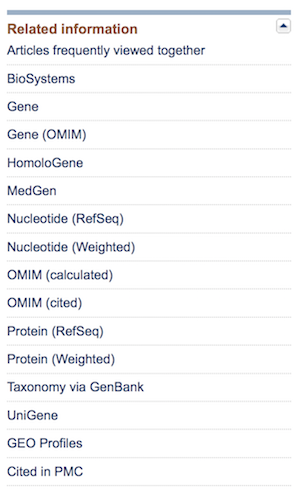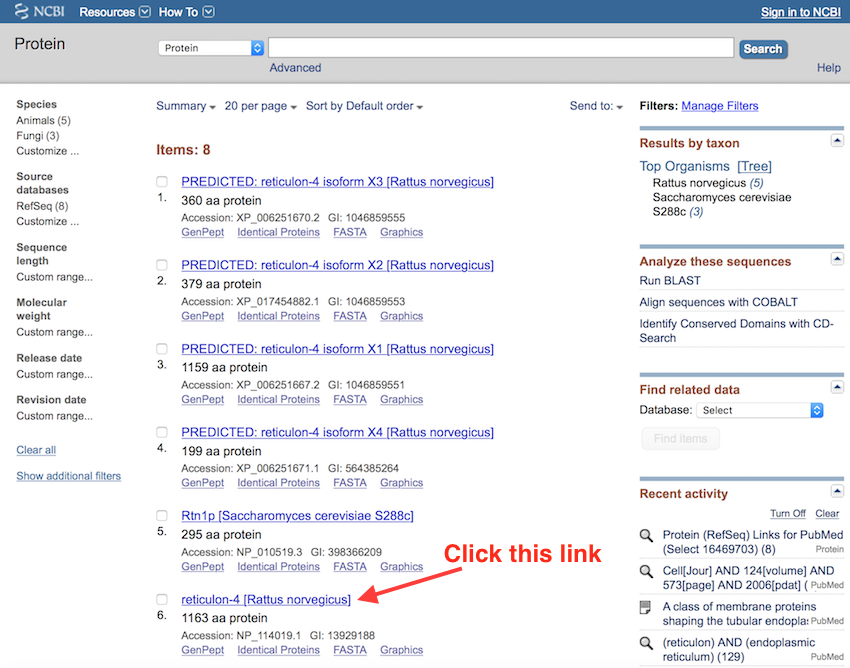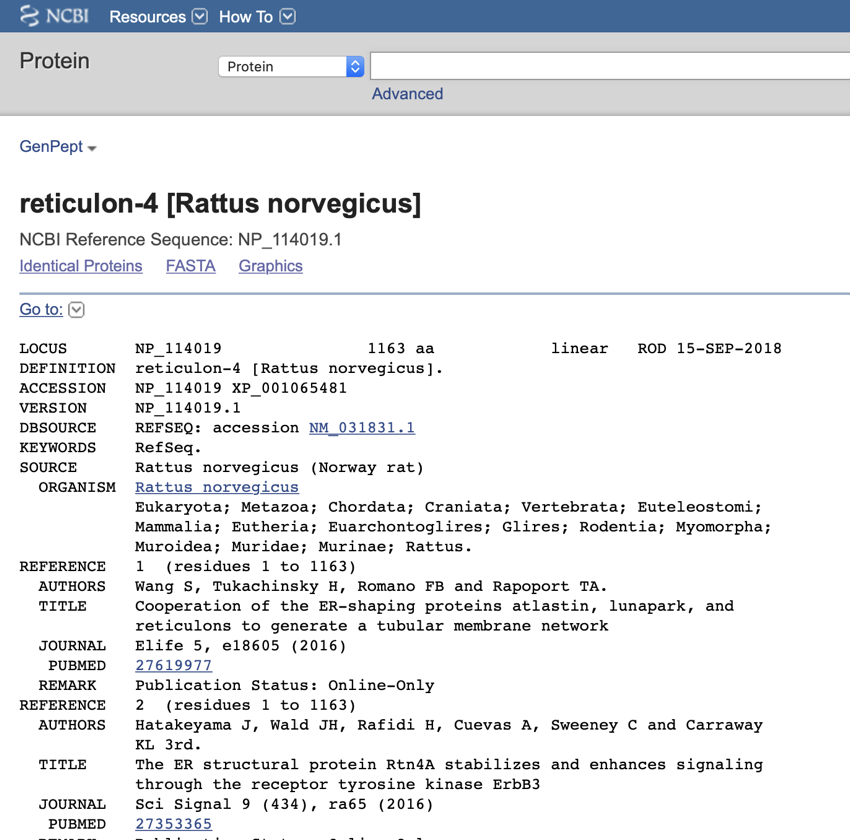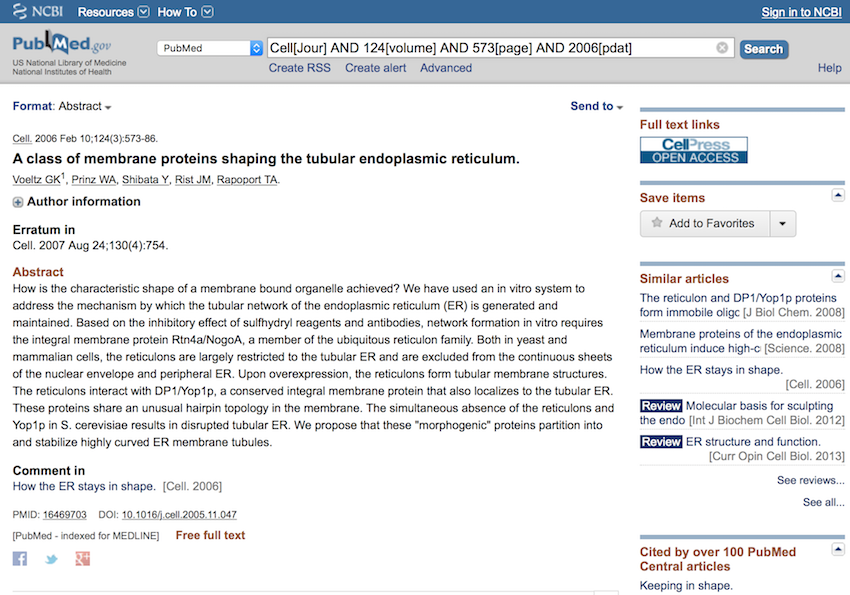Informatics Practical - PubMed Related Information List
In this section, we will have a look at some of the other information that can be found from a
PubMed
search by using the 'Related Information' list.
The 'Related Information' list will contain different links depending on the paper/abstract/sequence currently being viewed. In this section we will learn:
- How to use the Related Information list
- How to look up the protein sequence
- How to look up the DNA sequence
- How to find out if a genetic disease is associated with the protein

PubMed Related Information list - The links available will depend on the paper being viewed.
Note, you may have to scroll down the PubMed page to find it.
From the Related Information list for this particular
PubMed
entry (the Cell paper abstract you found using single citation matcher), it is possible to view the protein entry associated with the paper.
- On the Cell. 2006, 124: 573 (if you have lost the entry click on this link
 ) PubMed
) PubMed entry scroll down the page until you see the 'Related information' section as shown in the above image.
entry scroll down the page until you see the 'Related information' section as shown in the above image. - Click the protein link 'Protein (RefSeq)'. The page will now show protein(s) associated with this paper. You may see a list, or you may get a single protein entry (see below). If you get a list, then click on the link for protein reticulon-4 Rattus norvegicus NP_114019 (it should be the sixth in the list).

A list of proteins associated with the paper. Search run on Tuesday October 10, 2017 at 7:36:46 pm.

Protein entry associated with a paper - Sunday October 14, 2018 at 11:44:36 am
From this entry is it possible to learn a number of facts about the protein.
- Go to the Protein Entry page (open in another window) and click on the browser 'Back Button' twice to return to the abstract page (shown below).

Paper abstract page



